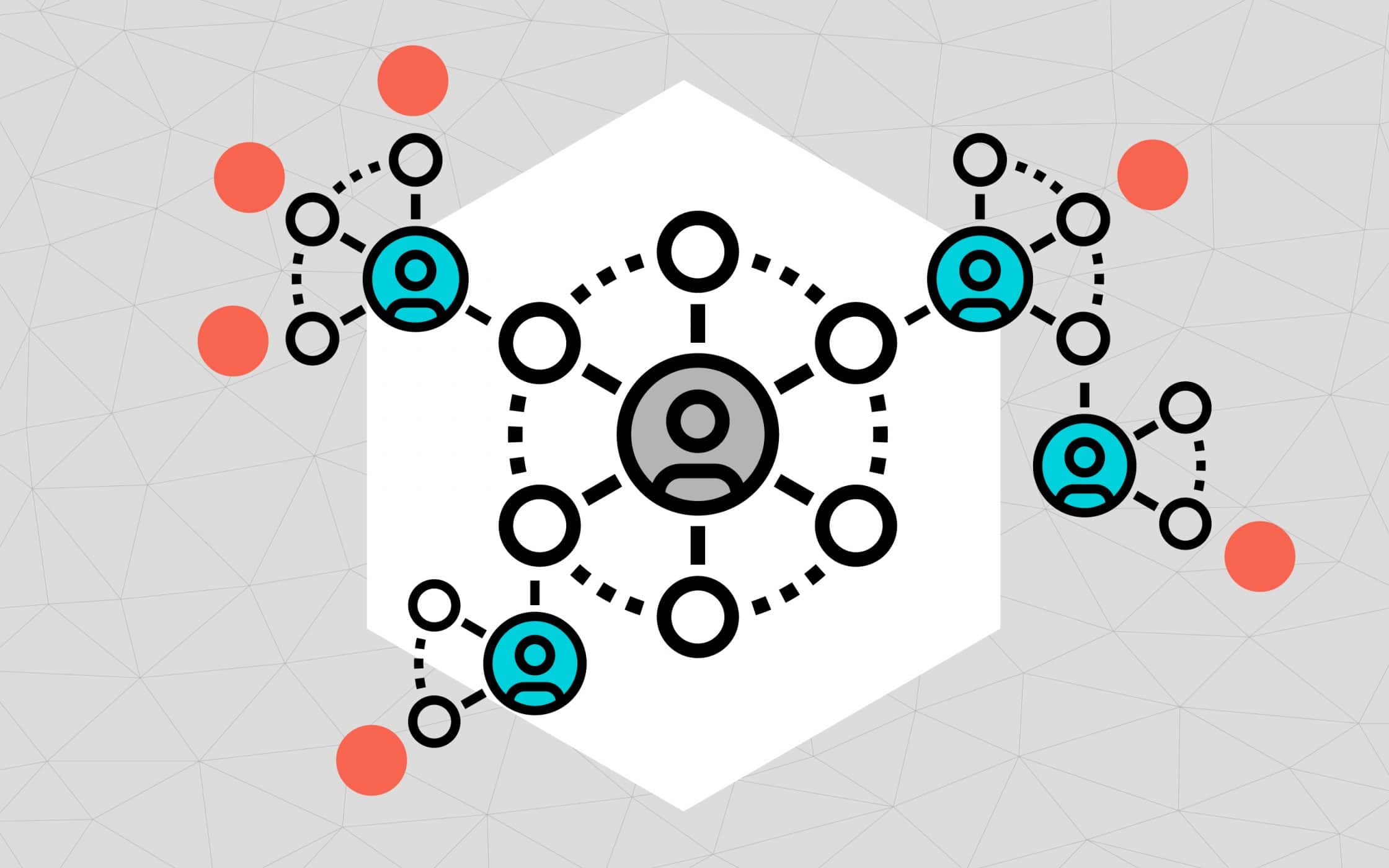It’s an SEO cliche: “Build great content and people will naturally link to you.”
However — for those of you that have actually tried that strategy — you know that it doesn’t always work.
There are hundreds of sites out there with incredible, mind-blowing content…and only a handful of links to show for it.
But this doesn’t mean that you need to resort to blog networks, article directory links and other link schemes. That will only give you a temporary ranking boost (if that) and make your site vulnerable to a Google Penguin penalty.
You can still build Penguin-safe backlinks by leveraging your quality content into quality links using the untapped technique of resource page link building. These types of links will help in local SEO, national, service based and even eCommerce SEO.
Resource Page Links 101
There are a lot of reasons to love resource page backlinking, but my favorite is that it’s one of the most scalable backlink link building strategies in SEO.
If you’ve ever tried to hire a content marketing agency to do guest blogging, blogger outreach, or infographic marketing on a large scale, you know how difficult it can be to take these effective techniques to the next level.
With a talented content creation team (and enough emailers) you can easily turn one or two pieces of content into dozens of quality, niche-relevant links.
Here’s how.
Step 1: Find Resource Pages
Your first step is to find resource pages that already link out to commercial sites. Resource pages are a bit of an old school website feature, so many of the sites you’ll be getting links from are aged, authorities with links from DMOZ.
Fortunately, you can find them fairly easily using some simple search strings.
There are hundreds of search strings you can use to find these, but here are the ones that I’ve found to work best:
“niche” + inurl:links
“niche” + “helpful resources”
site:.gov + “resources”
“niche resources”
Even if you’re in an obscure niche you’ll probably still find hundreds of potential targets.
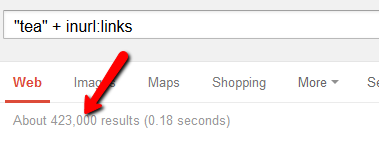
What I really like about this strategy is that you can often get your link on high PageRank pages. In fact I was able to find a PR4 resource page with links to helpful tea-related resources in the first 3 results.
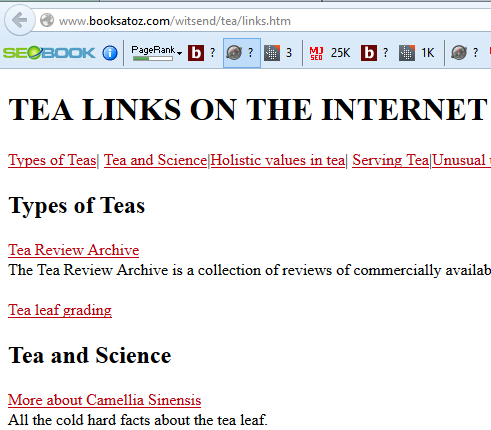
For some reason .edu and .gov sites tend to have more resource pages than other TLDs. Although they can be a bit more difficult to convince, links from these sites tend to be more powerful than your average .com.
Step#2: Up The Ante With Your Content
At this stage you have two options: you can go the “link begging” route and just ask the webmaster to add your link to the page. That can work if you have a particularly awesome piece of content, but I’ve found the response rate to be dismally low.
But I prefer to look at the content that they already link to and see if I can make it even better. Because these resource pages are old, they often link out to outdated content.
For example, in the Tea Links On the Internet Page mentioned above, I found a link to this page:

This isn’t a bad resource. But it’s a bit dated and has A LOT of room for improvement. If you can cook up an awesome article or infographic about cooking with tea, you can use this content to get links from this resource page (and several others).
You can send him this tested email template:
Subject: Question About Tea Links On The Internet
Hi Bob,
I was looking for some information about cooking with tea when I came across your Tea Links On The Internet Page at http://www.booksatoz.com/witsend/tea/links.htm.
Awesome page! I found a bunch of cool stuff that I hadn’t seen before.
Anyway, I noticed that you’re interested in cooking with tea. I actually just posted a comprehensive cooking with tea resource at: http://www.site.com/cooking-with-tea. It’s similar to the Sally-Place article you’ve linked to, but a bit more thorough and up-to-date.
Feel free to add it to your page.
Either way, keep up the great work with Booksatoz.com!
This email works well because it’s complementary and non-pushy.
Step #3: Broken Link Building
Alas, in addition to some outdated content, our beloved Tea Links On The Internet Page also had some broken links (I use the LinkChecker Firefox addon):
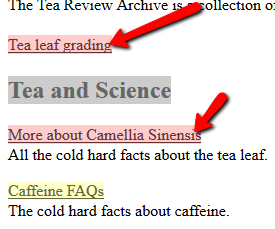
Another way to get this page to link to you would be to create a page on the same topic. Because the original page is gone you don’t need to make it amazing. Broken link building tends to get a higher response rate than upping the ante or link begging because you’re helping them out.
Word of warning: I want to let you know that sites with pages that have a lot of outdated or broken links aren’t usually maintained. This means that they may not get back to your email (or even see it!). So to make this work you need to scale this up to hundreds of pages.
(Optional Step #4): Reverse Engineering
If you want to go nuts, you can usually find hundreds of other link opportunities by finding all of the links pointing to outdated or broken links.
For example, let’s take one of the broken links from the tea resource page (daisy.uwaterloo.ca/~alopez-o/caffaq.html). Pop that into Ahrefs or your backlink checker tool of choice and see what comes up:
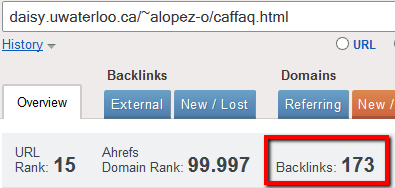
Wow, that’s 173 links pointing to a dead page!
Now, once you’ve created some content as a replacement, hit up those 173 pages for a link:
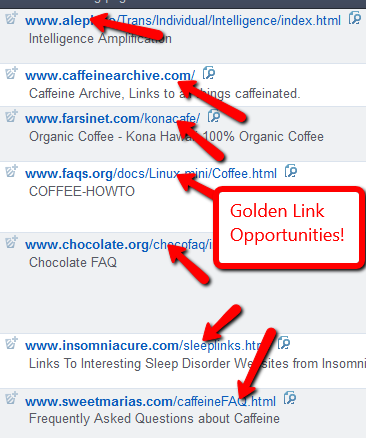
Yes, this takes a lot of legwork (and hundreds of emails). But if you scale it up, you can usually get untapped backlinks that your competitors only dream of. This is the type of link building that will always work: unpaid links that improve the web.
Have you ever tried resource page link building? I’d love to hear your experience with it. Please leave a comment below.
This was written by Brian Dean, a link building expert that runs the SEO blog Backlinko. His site helps webmasters build top-notch backlinks that over the long-term. He’s usually on the road, but currently lives in Berlin, Germany.



